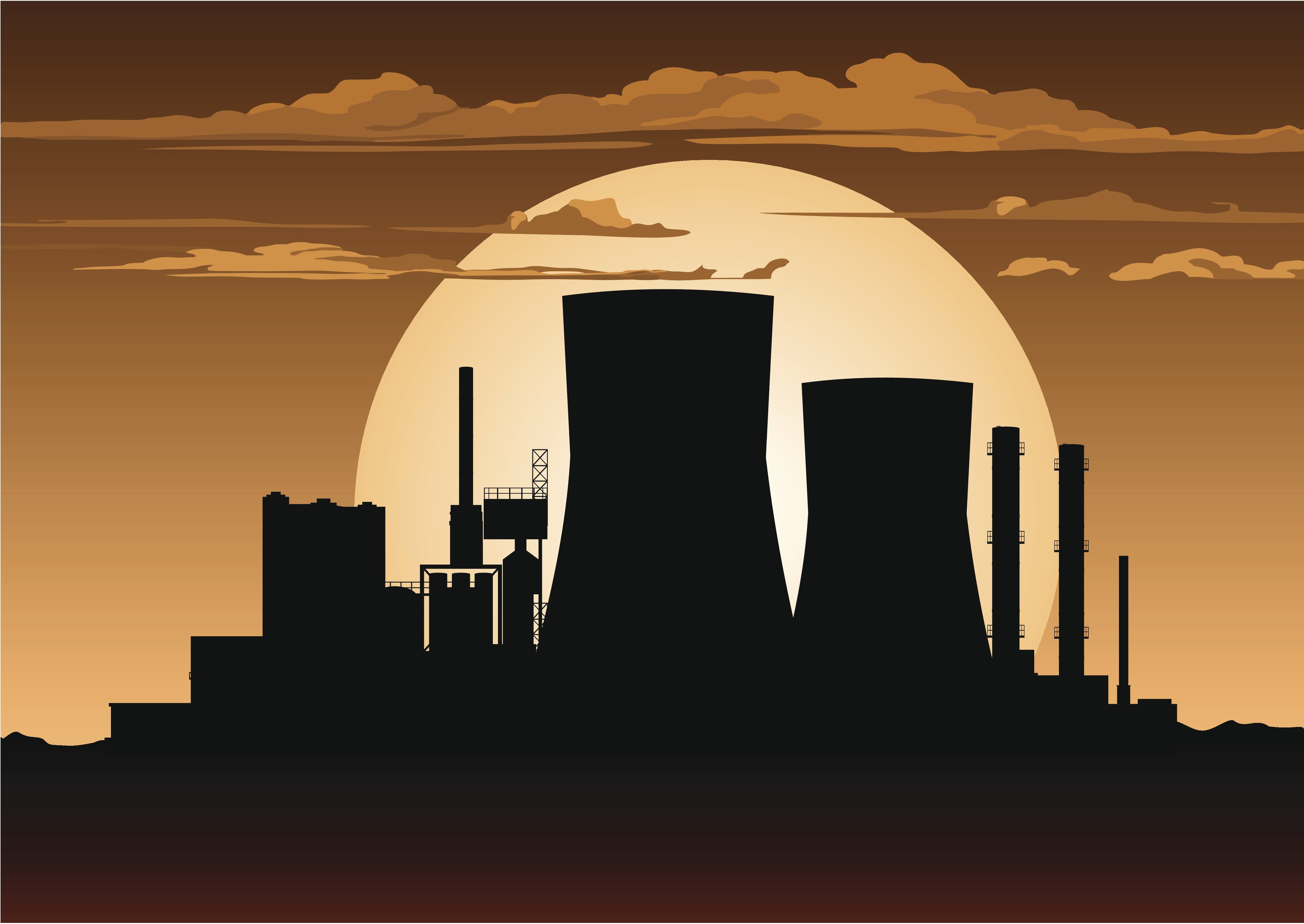President Trump made infrastructure spending a significant part of his campaign platform in 2016, and we're now starting to see his administration aim to deliver on those promises.
In this week's episode of Industry Focus: Energy, host Sarah Priestley interviews special guest Eugene Mulero of Transport Topics about how the proposed infrastructure plan could change the U.S. in the next few years. They discuss why most of the transportation industry is strongly in favor of a potential $0.25-per-gallon gas tax, just how much the U.S. is lagging the rest of the world on infrastructure, why it's unlikely that we'll see the full infrastructure spending plan come to fruition in 2018, some of the biggest companies to watch in the infrastructure space in the next few years, and more.
A full transcript follows the video.
This video was recorded on March 1, 2018.
Sarah Priestley: Welcome to Industry Focus, the show that dives into a different sector of the stock market every day. Today, we're talking Energy and Industrials. It's Thursday, the 1st of March, and we're going to be discussing infrastructure spending. I'm your host, Sarah Priestley, and joining me in the studio is a very special guest, Eugene Mulero of Transport Topics. Welcome to the show!
Eugene Mulero: Thanks for having me on!
Priestley: Thank you for coming! Eugene spends a lot of his time up on Capitol Hill. He's a regular now on C-Span, I believe. You seem to be a regular, at least. [laughs]
Mulero: Yeah, something like that.
Priestley: For anyone listening who doesn't know, Transport Topics is the go-to place for news in the freight transportation industry. You guys cover everything from regulation to new tech to major industry events. What's your particular area of interest?
Mulero: I'm the congressional reporter on the team, so my primary focus are the transportation policy committees on Capitol Hill and covering elections and some of the big states like Texas, New York, California, the governor's offices, and tracking funding policy from the freight transportation perspective.
Priestley: So, you've been very busy over the past couple of years.
Mulero: Yeah, totally.
Priestley: We're going to be talking about a hot-button topic right now, which is infrastructure spending. President Trump made the improvement of infrastructure in the country a key part of his campaigning.
Mulero: Yes.
Priestley: And we're now seeing the administration seeking to deliver on those promises. President Trump has proposed a $4.4 trillion budget for next year, and it includes $200 billion for infrastructure spending. The spending plan has proved contentious. It would potentially increase the country's deficit up by $7.1 trillion over the next decade. The only thing that there does seem to be a consensus on is that the U.S. is in much need of improved infrastructure.
Mulero: Yeah, that's correct.
Priestley: I think every four years, the American Society of Civil Engineers reviews the country's infrastructure and releases a report card. The 2017 report card gave the nation a D+. Is that a failing grade?
Mulero: That is a near-failing grade. That was the grade in 2013 and last year.
Priestley: And that's for the state of country's roads, bridges, drinking waters, ports, dams, school buildings, airports and railways. The U.S. currently ranks 12th out 138 countries in terms of quality of infrastructure, according to the World Economic Forum's international comparison. I'm sure that's not where the country wants to be.
Mulero: And I've seen some rankings where they don't even make the top 25.
Priestley: Wow, that's concerning. In his State of the Union speech to Congress, the president has talked about addressing crumbling infrastructure. He actually said every federal dollar should be leveraged by partnering with state and local government and, where appropriate, tapping into the private sector for investment. He also talked about wanting to cut the approval process, which I had no idea was so lengthy before any of this discussion started. What exactly is President Trump proposing?
Mulero: He's calling for $200 billion to be in direct federal funds. That's money that the U.S. Congress will have to appropriate, that appropriations committee will have to sign off on $200 billion. Of that $200 billion, $50 billion will be set up as grants that governors will be able to apply for rural projects. Let's say, Wyoming would be a perfect example.
Now, these grants would not be given, signed off, greenlighted. This will be an application process. The governors have to justify the merits of these project. $25 billion will go to incentivizing projects of advanced technology, so autonomous vehicles, smart infrastructure, vehicle-to-vehicle infrastructure technology. Then, $100 billion will be for matching funds. Out of the $100 billion, you would give an aspect of that to give it to the states. Let's say a state comes up with a plan. It doesn't have to be a rural project, but similar to the rural grant, the state says, "We have $100 million that we're ready to put up in funding. Can you match it?" The match will be 20% of that $100 million, so that'll be $20 million. The goal of that $100 billion is incentivizing a 20-80 match with the states.
The goal of these $200 billion, according to the Trump administration, is that it could leverage $1.3 trillion in infrastructure investments from not only that states but also the private sector. These would be the big banks, Goldman, etc., coming in and partnering with states on public-private partnerships to set up toll highways, private bridges that will have tolling or some sort of a fee. And ultimately, over 10 years, according to the White House, that could take you to a total of $1.5 trillion. So, that's the plan in a nutshell.
Priestley: So, just to break it down, if I was looking at a $1 million project, I would get $200,000 from the government and have to come up with $800,000 from a mixture of my own state pocket and then also private.
Mulero: And I should have said that, let's say you're New Jersey, you're a state, and you come up with $80 million, and expect that $20 million from the government as a match. You are not even guaranteed that the federal government is going to be there to meet that match. It's also an application process that will be determined by the U.S. Department of Transportation.
Priestley: You've talked about this being approved by the Department of Transportation. Is that department going to be the only department responsible for approving these permits for projects? Because they want to produce it to 21 months, is that correct?
Mulero: The permitting process, when it comes to the streamlining proposal of the plan, which is a completely different title, they want to have what they call a lead agency on a specific project. Let's say a state is looking to build a transit system. The federal government, they don't specify which agency, but the federal government will select an agency, so let's say the EPA or the Department of Transportation, to serve as what they call the lead agency. And they will oversee the entire permitting process for that project application, with the goal of taking the project from anywhere from five to 10 years down to two years. The thinking is, if you have one agency, then you minimize the applicative process.
One thing worth pointing out is, only less than 5% of the nation's projects take as long as 10 years in the application process, in the permitting process. The average time is about 3.5 years for your big transportation project. That's why we saw the Tappan Zee Bridge, the new one over in New York State, it's actually on a fast-track because it didn't have to go through a lot of the permitting process because the permitting process that already been done because there was a parallel bridge next to it, the old bridge was right there. So, they used the existing environmental documents, they had the environmental reviews done already.
And then, another thing worth pointing out in the permitting process is, there are streamlining provisions in law right now that would minimize the applicative process the Trump Administration is complaining about. And I don't mean to go way in the weeds here.
Priestley: No, no, it's interesting.
Mulero: They were signed into law in the last highway bill, the FAST Act, in 2015. And the bill before that, the MAP-21 bill in 2012, provisions in those two laws that have still yet to be taken into effect are still dormant laws because U.S. DoT has yet to, for lack of a better term, get to them. So, those laws, when executed, would minimize the permitting process, would reverse the duplicative process. Let's say, within U.S. DoT, one provision that's dormant is, if the Federal Highway Administration is doing a survey of a highway, and there's a lot of safety components, the National Highway Traffic Safety Administration, NHTSA, which is another sub-agency of U.S. DoT, will come in and do another review on the same corridor. Under this law, in the FAST Act, that would not be the case. Only the Federal Highway Administration would be the sub-agency doing the survey on the environment of that highway.
Priestley: OK. But, that's separate, essentially, to the spending plan.
Mulero: Yes. The infrastructure plan has five components, and streamlining the permitting process is one of them. Another one is to incentivize the workforce by adding more educational resources to get high schoolers and college kids to be interested in STEM programs, science and technology. It's an overarching, very ambitious infrastructure plan that, right now, doesn't really have a lot of endorsement on Capitol Hill.
Priestley: OK, that's exactly what I wanted to ask you about. You spend a lot of time on Capitol Hill, what's your impression of the likelihood of this actually getting through? And if it doesn't get through, what do you think it will look like as an end result?
Mulero: The latter is the big question. Right now, the chances are very, very slim for this year. You had the second Republican in Command in the Senate, Senator Cornyn of Texas, tell reporters yesterday that he doesn't expect an infrastructure bill to happen this year. This morning, speaking to state transportation officials, you had the big four transportation policy guys, the Chairman and ranking members of the Senate and House Transportation Committees. There was no consensus as to whether you could get an infrastructure bill done this year.
The closest we saw to some optimism was the Chairman of the House Committee, Bill Shuster of Pennsylvania, who said that he's going to really push to have these legislative markups on a bill this summer with the hope of having something done by the end of summer before the August Congressional Recess -- because Congress takes all of August off. And he told reporters this morning, if you can't get that done, he would look to have something after the midterm elections. It's technically not called a lame duck, but for lack of a better term we still call it a lame duck. A lame duck would be a presidential election. This is a midterm election.
Priestley: It's a similar effect.
Mulero: Correct. Bill Shuster is saying that because, since this is a midterm, it's customary for Congress not to do anything legislatively the month or two months prior to a midterm or a presidential election.
So, it's a very pessimistic, bleak outlook on whether or not they're going to get a big transportation bill this year. I actually go back to after Trump was elected, I want to say a week or two after Trump was elected, speaker Paul Ryan did a big panel, I think it was with The Atlantic magazine, talking about doing an autopsy of the election and getting his reaction. And he was asked, "President Trump is calling himself the Builder in Chief, he's going to get an infrastructure bill done. What do you think of it?" His reaction literally was to laugh out loud and then say, "We just passed the highway bill," referring to the 2015 FAST Act highway law, and then he says, "The Highway Trust Fund doesn't expire until 2020." Then, next topic. So, the leader of the Republican House of Representatives, and a person who's opposed to increasing the federal gas tax, which is actually the big elephant in the room in this whole big debate, he basically acknowledged that his party is going to wait until the deadline approaching the fiscal cliff, the funding cliff, on highway transportation projects, which is October of 2020.
Now, on the flip side, to your point, let's say they actually do get a law passed this year. I think what it will look like, it will look very, very small. It's not going to be a $1.5 trillion investment leveraged thing. It will be something like, instead of $200 billion, maybe $100 billion with the goal of reaching $500 billion over six or seven years. And it doesn't increase the fuel tax, because there's a lot of Republican opposition to that. And there will be some compromise on the part of Democrats. The Democrats will sacrifice some money for transit projects, because transit projects are more relevant to urban districts. And Republicans will sacrifice some money for rural projects, because more rural districts are represented by Republicans.
Priestley: OK, that's interesting. It's interesting because a lot of infrastructure stocks got bought up on the campaign promises by President Trump and then pulled back a little bit this year. But, it seems like maybe everybody should keep their expectations in check. One thing that I will say about it that I think it's interesting is, it's really brought the subject of infrastructure to the fore of voters' minds, I feel like. I've only been in the U.S. for two years, so you can tell me if this has always been an ongoing political weapon, but it seems like it's going to become increasingly important.
Mulero: We have a very unique Commander in Chief who calls himself the Builder in Chief. That's debatable, by the way. But, since he really campaigned hard on infrastructure, and he borrowed a page from our former Vice President, Joe Biden, who was calling certain infrastructure projects like LaGuardia Airport a third-world status airport. He really elevated the conversation. One, we need to give President Trump credit for elevating the national conversation on infrastructure. He has done that.
Priestley: I actually wanted to ask you about two things. The first was the gas tax. I've seen a ton today, even in The Wall Street Journal. I think President Trump has proposed a $0.25 per gallon gas tax.
Mulero: Yes.
Priestley: And this is just a straight-on $0.25 tax. It's not an incremental amount at all. It doesn't seem to be going down too well, but I'm sure that people that read Transport Topics are very concerned.
Mulero: The $0.25, that's something at the White House has not commented on. Trump did not say this publicly. The White House is not denying it, either. The President had a meeting February 14th with the 10 top transportation policymakers on Capitol Hill. And one of the persons in that meeting, Senator Carper of Delaware, he hasn't said whether or not he had the green light from the White House, but after the meeting he told reporters that the President, several times, endorsed a $0.25 increase to the diesel and gas tax, which hasn't changed since 1993.
So, this morning, Carper was at this conference. You had other lawmakers who were at that meeting with the President who confirmed what the President said. We don't know exactly what the President has in mind, if he means $0.25 over 10 years, five years, an incremental increase. However, there is already pushback from these Republicans, especially the leadership. This guy, the Second in Command in the Senate, John Cornyn, is among them, the head of the transportation panel in the Senate, John Barrasso, who are opposed to a fuel tax increase for multiple reasons. One being, they call it a regressive tax. The argument is, because vehicles are so fuel efficient, we don't have a long-term viability for the fuel tax, we should be looking at other projects, other funding options like a vehicle miles traveled, etc.
Democrats, on the other hand, are applauding this. And if Trump actually comes out publicly and endorses a $0.25 gas tax, which is what the Chamber of Commerce, the American Society of Civil Engineers, the American Trucking Associations, the State Transportation officials, nearly all the governors, almost all of them really support this. Because while we are looking at a long-term funding system, funding option for infrastructure, right now, 95% of the vehicles on the road are fueled by gasoline. So, this would be the quickest way to come up with real, hard money to repair that bridge in Delaware, that road over in California.
Priestley: And what might that do to shipping companies or freight companies?
Mulero: Freight companies, the railroad industry, the trucking industry, cargo, air freight, near unanimous agreement that the fuel tax should be increased. They see it at the best, easiest way to repair the roads, to come up with the money to give it to the U.S. DoT. So, U.S. DoT, through a formula funding system, can give more money to South Carolina to improve their roads. So, the "poorer" states will get most -- that's how the federal government distributes their transportation dollars. So, you're able now to help the states that need the money the most to repair the systems.
If you privatize the corridors, what these freight companies argue is, that would lead to more tolling, and that would be a form of double taxation. Now, that could be a whole different debate that economists can have, whether or not it's a true form of double taxation. Nevertheless, if you take the perspective of, the trucking industry's argument is, aside from being a form of double taxation because we're already being taxed through the fuel tax, now they're paying a toll to use the same road that they're helping to pay --
Priestley: Already paying for.
Mulero: Yeah, exactly. Even if you have a tolling system like an E-ZPass concept, the industry argues that the psychology that a toll has on a driver is to automatically slow down. Even if you have a fast lane, tolling lane, where you can go 65 on that lane, most people still slow down when they go through tolls. For the trucking industry, slowing down means --
Priestley: Wasted time, wasted efficiency.
Mulero: Yeah, exactly. If you want to get some place in five hours, you add several tolls, you're now slowing down your truck.
Priestley: It's interesting. I'm sure some of our listeners will be surprised to hear that the trucking industry as a whole is pro this. But, obviously, I think, the potholes that they hit, the bad roads they encounter, that all damages the vehicle, and this all goes into the life cycle of the truck and things like that. Owner-operators may be more harder hit by this.
A couple of companies to mention for people, if this plan goes in place or if we just start to see more infrastructure spending going forward, especially privatization, tolls, Transurban is an Australian company, they run a lot of the tolls in North America. Then, we have a ton of categories, because this is such a huge industry. And it's a cyclical industry, which is important to note. At the minute, we're potentially at the precipice of a kind of boom, but that's not where we have always been. Building materials like cement, Vulcan and U.S. Concrete. Heavy construction equipment, Caterpillar, United Rentals. Building product stocks, Masco, Builders FirstSource. Infrastructure and engineering, Chicago Bridge & Iron, Jacobs Engineering. Raw material like steel, which you really need for pretty much every major construction project, Nucor and United States Steel Corp.
Potentially, there's going to be a lot of winners. One thing I will caution investors with is, as I mentioned right at the start, a lot of these stocks have been bought up in anticipation of this spending plan. So, watch out for those valuations. I would wait for the concrete result to come out of the government, because it sounds like it might take a long time.
Mulero: Yeah. And seriously, I think the next highway bill, when you look at the math, I think it'll either come into fruition or really come into focus by 2020. That's when the funding authority for the Federal Highway Trust Fund expires. It expires at the end of that fiscal year. Congress has typically waited until the last minute to address the Highway Trust Fund. They haven't done it this year, they didn't do it last year. So, it's a really good expectation based on what we're hearing, the fact that there's no actual legislation so far this year, and this is something that was supposed to come out during Trump's first 100 days in office. So, all these delays really signal to something that would happen around 2020.
Priestley: So, it might be worth waiting for the excitement to die down on some of these stocks, the valuation to come down, and then review them again in preparation in 2020. Thank you so much for being on the show!
Mulero: Thank you for having me!
Priestley: Your knowledge is incredible. That's it for today. If you would like to get in touch, please feel free to email us at [email protected] or tweet on Twitter @MFIndustryFocus. As always, people on the program may own companies discussed on the show, and The Motley Fool may have formal recommendations for or against stocks mentioned, so don't buy or sell anything based solely on what you hear. Thank you, as always, to the marvelously patient Austin Morgan for mixing the show. For Eugene, I'm Sarah Priestley. Thanks for listening and Fool on!





